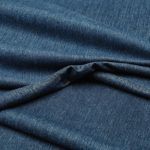Overview of Sensitive Skin and Clothing Choices
Sensitive skin can be a challenging condition that requires careful consideration of various triggers. Itchy, red, or irritated skin can often be attributed to fabric sensitivity. Understanding these triggers is crucial for selecting skin-friendly clothing.
Several common conditions, like eczema and dermatitis, can be exacerbated by unsuitable clothing materials. The choice of fabric plays a critical role in managing such conditions. For sensitive skin, choosing garments made from soft, breathable, and non-irritating materials is paramount to ensure comfort and to mitigate flare-ups.
Additional reading : Winter Fashion Mastery: Effortlessly Blend Textures for Chic UK Wardrobe Transformations
Selecting the right clothing materials is essential not only for comfort but also for preventing skin irritations and allergic reactions. Factors such as the weave, texture, and chemical treatments of fabrics can impact skin health. Many individuals find relief by opting for clothing specifically designed for fabric sensitivity.
Skin-friendly clothing options often encompass organic cotton, bamboo, and other hypoallergenic textiles. These materials are less likely to cause irritation and have been endorsed by dermatologists for their comforting attributes. By making informed choices regarding fabric selection, individuals with sensitive skin can significantly improve their comfort and well-being in daily wear.
Also read : The Ultimate Guide to Stylish Maxi Dress Ensembles for a Chic UK Autumn Day Out
Top-Rated Fabrics for Sensitive Skin
Achieving comfort and avoiding irritation involves selecting the best fabrics for sensitive skin. Opting for hypoallergenic clothing fabrics can significantly enhance comfort levels.
Organic Cotton
Organic cotton stands out for those with sensitive skin due to its breathability and moisture-wicking properties. This natural fabric allows air circulation, reducing sweat build-up and potential irritation. Its cultivation process avoids harmful chemicals, making it a safer and more eco-friendly option.
Bamboo Fabric
Bamboo fabric offers natural antibacterial properties, making it an excellent choice for skin prone to irritation. It provides supreme softness and comfort, while additionally aiding in temperature regulation. These characteristics make bamboo a favourite among those seeking a reliable, skin-friendly solution.
Modal and Lyocell
Compared to traditional cotton and synthetics, modal and lyocell deliver superior durability and softness. These textiles are produced through environmentally-friendly processes, highlighting their sustainable benefits. Their smooth texture offers significant relief from fabric sensitivity.
Merino Wool
Unlike standard wool, Merino wool is unique in its adaptation for sensitive skin. Its efficient moisture management and temperature control properties provide unmatched comfort. Merino wool’s fine fibres ensure less irritation compared to conventional wool options.
Tips for Selecting Clothing for Sensitive Skin
Shopping for sensitive skin apparel requires mindful fabric selection, attention to material composition, and the avoidance of irritants. Prioritising fabric sensitivity and opting for gentle textiles can effectively reduce irritation.
When choosing clothes, always examine the material label. Identifying gentle fibers, such as organic cotton or bamboo, ensures a healthier option for skin-friendly clothing. Avoid fabrics treated with chemicals or synthetic materials like polyester, as they can exacerbate skin conditions.
The fit of your clothing also plays an important role. Loose-fitting garments allow your skin to breathe and move freely, reducing pressure and friction points. This choice minimizes rubbing, which is particularly important for those dealing with eczema or dermatitis.
Focus on simple styles that do not have excessive embellishments or tags, which might irritate sensitive areas. Seamless construction can also enhance comfort by decreasing skin contact with rigid stitching.
Moreover, avoid excessively tight clothing that restricts air circulation. Prioritise attire that promotes a balance between the body and the surrounding environment to support skin health. By following these guidelines, you can dress comfortably while giving your sensitive skin the best possible care.
Expert Opinions and User Testimonials
Understanding sensitive skin needs often involves insights from dermatologists and experiences shared by users. Expert review on fabrics can lend credibility to fabric choices, offering clarity on skin-friendly options. Dermatologists frequently emphasize selecting materials like organic cotton or bamboo for their hypoallergenic properties, helping to alleviate irritation.
Dermatologist Insights
Dermatologists highlight the importance of fabric recommendations tailored to specific skin conditions. They usually suggest softer materials that minimize friction, thereby reducing flare-ups. For instance, those with eczema may benefit from seamless clothing to lessen skin contact with abrasive seams. Advice from professionals also includes fabric care guidance, such as using mild detergents, to preserve clothing integrity and maintain skin health.
Real User Experiences
Personal stories convey the practical benefits of hypoallergenic clothing fabrics. Users often praise the comfort provided by fabrics like modal, sharing how these textiles alleviate discomfort. Common pitfalls include not checking fabric labels, leading to unexpected irritations. Testimonials often stress satisfaction derived from informed choices, enhancing overall well-being. User experiences improve collective knowledge, offering invaluable insights into the effectiveness and comfort of these materials.
Care Instructions for Sensitive Skin Fabrics
Taking care of sensitive skin apparel involves specific washing and drying practices to ensure longevity and comfort. Fabric washing tips are crucial for preserving the integrity of skin-friendly clothing and minimising any potential irritations. Start with selecting a mild, hypoallergenic detergent that avoids harsh chemicals, which can aggravate fabric sensitivity.
When cleaning delicate materials like organic cotton or bamboo, opt for a gentle cycle with cold water to maintain their fabric sensitivity. Avoid using fabric softeners, as these can introduce additional irritants to sensitive skin. Instead, vinegar can be a natural alternative for maintaining softness.
Drying techniques are equally important. Air-drying sensitive skin clothing is always preferable, minimising wear and tear and exposure to heat. However, if machine drying is necessary, set it to a low temperature. This approach ensures clothing maintains its shape and skin-friendly attributes over time.
To prevent fabric damage over the long term, adhere to these guidelines consistently. Additionally, routinely inspect for wear or damage that might provoke irritation, addressing any issues promptly. By prioritising these care instructions, individuals can enjoy the lasting benefits of their carefully selected sensitive skin apparel.
Seasonal Considerations for Sensitive Skin Clothing
Sensitive skin apparel requires special attention to seasonal changes, ensuring comfort and fabric sensitivity throughout the year. The UK climate, with its varying weather conditions, demands strategic year-round clothing suggestions to maintain skin health.
During summer months, fabrics like organic cotton and bamboo are ideal. These materials offer breathability and efficient moisture-wicking properties, reducing skin irritation in warmer conditions. Seasonal fabric choices such as these provide relief from overheating and excessive sweating, often exacerbating skin sensitivity.
As temperatures drop, layering becomes essential. Merino wool stands out for winter wear due to its temperature regulation and moisture management capabilities. Its fine fibres ensure warmth without irritation, unlike standard wool. Layering strategies, like using a soft base of lyocell or modal combined with Merino, protect sensitive skin while providing insulation against the cold.
Transitioning between seasons involves adapting fabric choices to manage fluctuating temperatures. Consider using mid-weight fabrics like modal during spring and autumn for continuity in comfort. By incorporating these insights, individuals can navigate the UK climate with informed seasonal fabric choices, ensuring skin-friendly clothing all year round.







